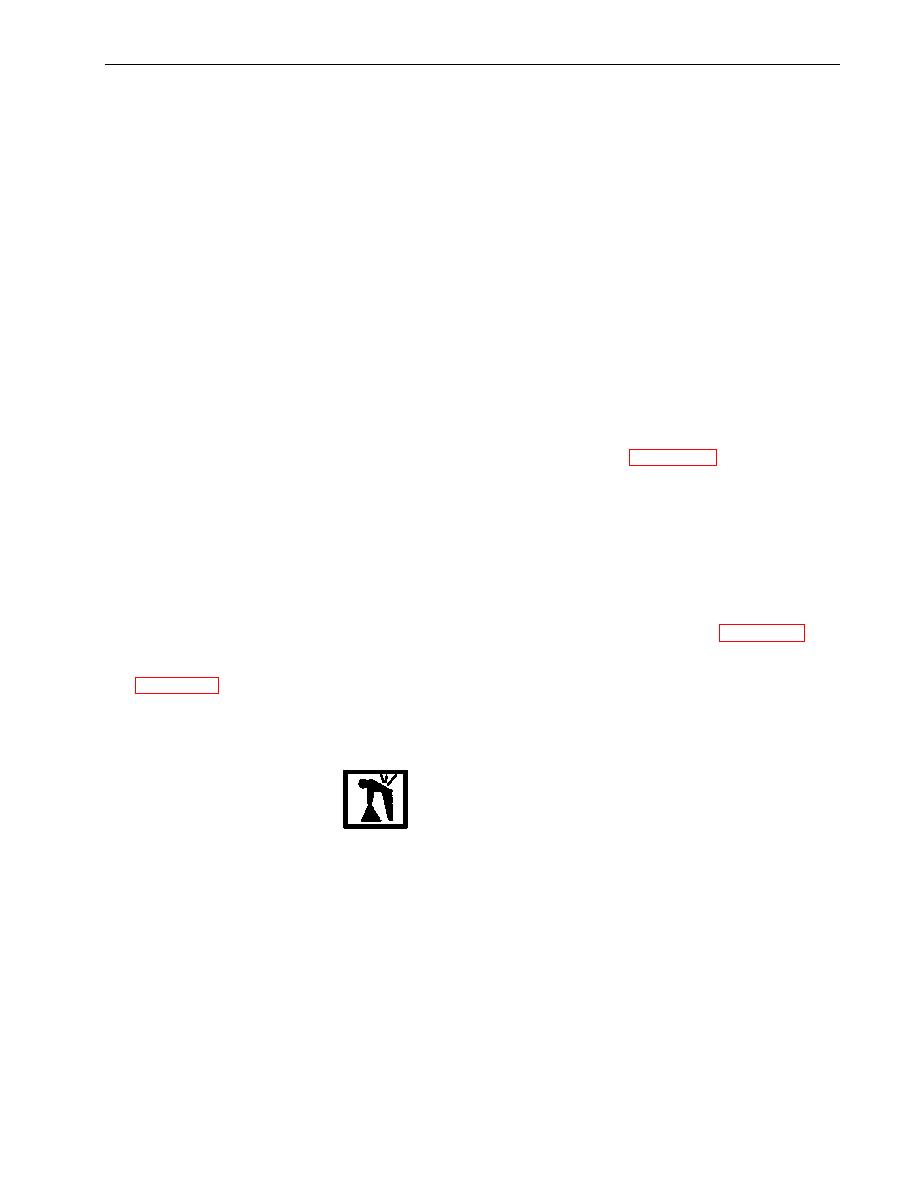 |
|||
|
|
|||
|
|
|||
| ||||||||||
|
|
 TM 9-4120-430-14
0059 00
TEST
1.
Test the compressor heater (12) to see if it is still functioning. See figure 1.
NOTE
It is easier to use the old compressor heater with a new compressor than cut and splice
wires for the compressor heater that comes with the new compressor.
a.
Connect main power source and turn on circuit breaker to unit.
b.
Using a multimeter, check for 0.5 amps to compressor heater.
c.
If heater is still good, pop out the heater from the old compressor.
d.
Turn off circuit breaker to unit and disconnect the main power source.
2.
Remove cover from compressor (8) terminal box (1).
3.
Verify labels and disconnect terminal lugs. See wiring lists and schematic diagram, WP 0040 00.
4.
Using a multimeter, test for continuity between pins T1 and T2, T2 and T3, and T3 and T1 of the compressor
electrical receptacle. Continuity should exist. If not, replace compressor.
5.
Check for continuity between pins T1, T2 and T3 and the compressor housing. No continuity should exist. If
continuity exists, replace compressor.
REMOVAL
1.
With dry nitrogen flowing through refrigerant system, debraze tubing attached to compressor (see WP 0051 00).
2.
Disconnect the electrical wiring at the compressor electrical receptacle. Refer to wire list and schematic diagram
3.
Remove four nuts (2), four flat washers (3) and four grommets (4) securing compressor (8) to the four mounting
bolts (11).
WARNING
Compressor weighs as much as 92 lbs. (41.72 kg) and could cause injury to
personnel and damage to equipment if not handled properly while removing from
unit. Two personnel are required to lift the compressor.
4.
Carefully lift up compressor from unit.
5.
Remove four resilient mounts (5) from compressor. Inspect for wear or damage. Replace as necessary.
6.
Remove four spacers (6) and (7). Inspect for damage. Replace as necessary.
DECONTAMINATION
1.
After removal of a bad compressor from the refrigeration system, tip the compressor toward the discharge port to
drain sample of oil into a clear glass container.
0059 00-3
|
|
Privacy Statement - Press Release - Copyright Information. - Contact Us |